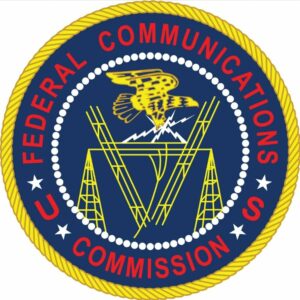 The Federal Communications Commission (FCC) will hold its Disability Advisory Committee (DAC) meeting tomorrow (Wednesday), October 14, at 1:30 p.m. ET. The meeting will be held remotely, with video and audio coverage at www.fcc.gov/live.
The Federal Communications Commission (FCC) will hold its Disability Advisory Committee (DAC) meeting tomorrow (Wednesday), October 14, at 1:30 p.m. ET. The meeting will be held remotely, with video and audio coverage at www.fcc.gov/live.
The meeting is expected to discuss, among other topics:
- A report and recommendation on enhanced Electronic Newsroom Technique (ENT) and other technologies for captioning live television programming. ENT captions are created from a newscast’s prewritten scripts, and requires reporters and anchors to stay on script as only the scripted material will be displayed as captions.
- A report and recommendation on best practices for creating audio description. Popular with people who are blind or with low vision, audio description inserts audio-narrated descriptions of a program’s key visual elements, such as onscreen actions, characters, costumes, and text appearing in graphics in the video, into natural pauses between the program’s dialogue.
The DAC meeting will be captioned, and is open to the public. During the meeting, members of the public may submit questions and comments to the DAC via email at livequestions@fcc.gov.
The Disability Advisory Committee was created to provide advice and recommendations to the commission on a wide array of disability issues within the FCC’s jurisdiction. Some of the issues addressed in the past have included closed captioning, audio description, telecommunications relay services, access to emergency information on television, telephone emergency notifications, and device accessibility.
Expanded Audio Descriptioncaptio

Current audio description rules require commercial television broadcast stations that are affiliated with one of the top four commercial television broadcast networks (ABC, CBS, Fox, and NBC) in the top 60 television markets to provide 50 hours of audio-described programming per calendar quarter during prime time or on children’s programming, as well as an additional 37.5 hours of video-described programming per calendar quarter at any time between 6 a.m. and midnight. The top five non-broadcast networks currently subject to the audio description requirements are USA Network, HGTV, TBS, Discovery, and History.
Video programming distributors (cable and satellite companies) serving the top 60 markets are required to pass through the description track to viewers.
The new proposal would expand audio description regulations in up to 10 additional designated market areas (DMAs) each year for a period of four years.
Visit the FCC’s meeting page for more details.
FCC Chairman’s Awards
The winners of the FCC’s 2020 Chairman’s Awards for Advancements in Accessibility were recognized last week.
The awards, which began in 2011, are focused on improving access to telecommunications and technology for people with disabilities. Those being honored this year are national thought leaders who have advanced the cause of accessibility throughout their careers.
The recipients of the 2020 Chairman’s Awards are:
- Karen Peltz Strauss, a trailblazer whose decades-long career advocating for accessible technology for consumers includes many years as a public servant at the FCC.
- Claude Stout, advocate and long-serving executive director at TDI, whose collaborative approach to accessibility challenges achieved positive outcomes for consumers.
- Tom Wlodkowski, an advocate and innovator with more than 30 years of experience increasing access to video programming, internet/broadband, and connected technologies for individuals who are blind or with low vision.
CVAA Biennial Report
The FCC earlier this month submitted its fifth biennial report to Congress, as required by the 21st Century Communications and Video Accessibility Act of 2010 (CVAA). The purpose of the CVAA is to help ensure that individuals with disabilities are able to fully utilize emerging communications services and equipment and better access video programming. The 2020 CVAA Biennial Report examines the accessibility of telecommunications and advanced communications services and equipment over the past two years.




